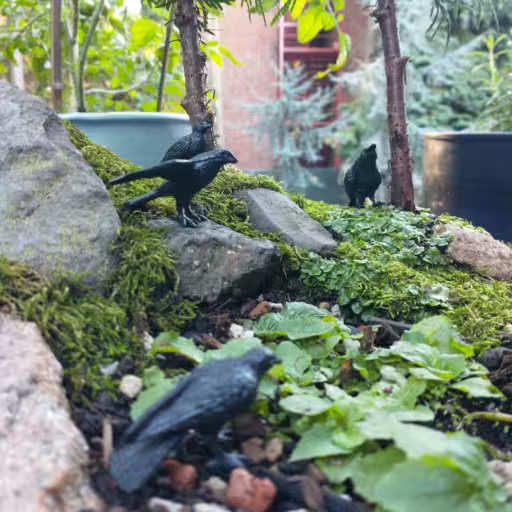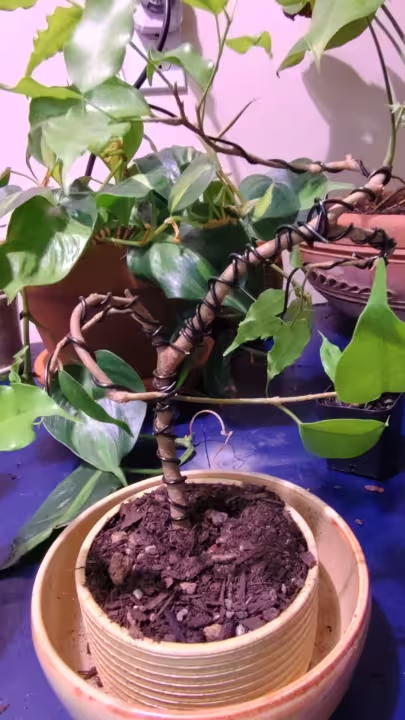This looks like a proper bonsai! I’m quite happy with this project I put together while bored during the week of ice. I had this ficus growing in a pot without giving it much attention for a couple months now. I had planned on putting it in my waterfall penjing, but thought it was too big in comparison to the mountain I was able to make out of the red lava stone. I had received a Christmas gift of a pretty pot, and being faced with being indoors for a whole week with nothing else to do, I decided to put together a proper indoor bonsai. Small tree in a small pot! I also wanted to get started with wire training, and after a couple of failures, I have my first success with this ficus.
When I first started trying to wire train my trees, I thought I could get by without getting the more expensive bonsai wire. I thought regular old hobby store aluminum wire would do just fine. But after damaging the root of my Korean Fir, breaking the top off a Japanese maple (and thus learning that they graft the tops onto other trees!), and nearly killing a baby tree I grew from seed, I broke down and bought proper wire. What a difference! This wire is much easier to bend and is far easier to work with. It feels as though it could do less damage to a tree as it seems to have some sort of coating around it.
I folded a small piece of this wire into a U-shape and used it to secure a circle of screen at the bottom of the pot. I ran another piece of wire through the screen in the opposite direction, perpendicular to the first wire, that would be used to secure the ficus to the pot. Already, I can tell that this wire is far superior to work with.
The rest of the potting process was pretty simple. I layered in a small amount of bonsai soil, placed the tree, and tied it down with my wire. More bonsai soil was added and packed around the roots of the tree to help it stand securely. The wire was twisted down to hold the tree in place, and bent beneath the surface of the soil to hide it. I topped it off with blue gravel and a small piece of moss.
I think in some areas of the main trunk, I did not get enough of the wire wrapped around so it would not stay as bent as much as I would like. I was also cautious, with my past experiences of killing trees attempting this, so I tried to go light with the wire and the bending. I did not try to “bend it until the sound is about to come out” as a bonsai video I saw instructed. If I felt or saw any amount of damage, I backed off so the tree could heal. I really like this ficus, and I don’t want to lose it!
I tried to make sure there was a branch twisting off in each direction. I wanted the tree to appear to shoot off in every direction with twisting branches! These wires will stay twisted around the trunk and branches for four weeks before I remove them and reapply the wires to continue training as necessary.
With the wire training also came quite a bit of trimming. There were simply too many branches and leaves in certain areas that made the ficus look too cluttered. I trimmed several leaves and about 4 or 5 stems. The ficus really needed the haircut! I’ve read that you can remove up to a third of the trees root or branch volume without killing it. Hopefully, fingers crossed, this ficus will survive and I can root a few more of these little trees for a larger indoor penjing project further down the road.
With a fresh new look, I’m going to call this project complete for the moment. A simple project to help hold me over until I can work on a larger outdoor build, and a small one that will add to my indoor plant display. With much hope for the future, for more builds to come in the future, and good times putting them together, I patiently await the new growth!

